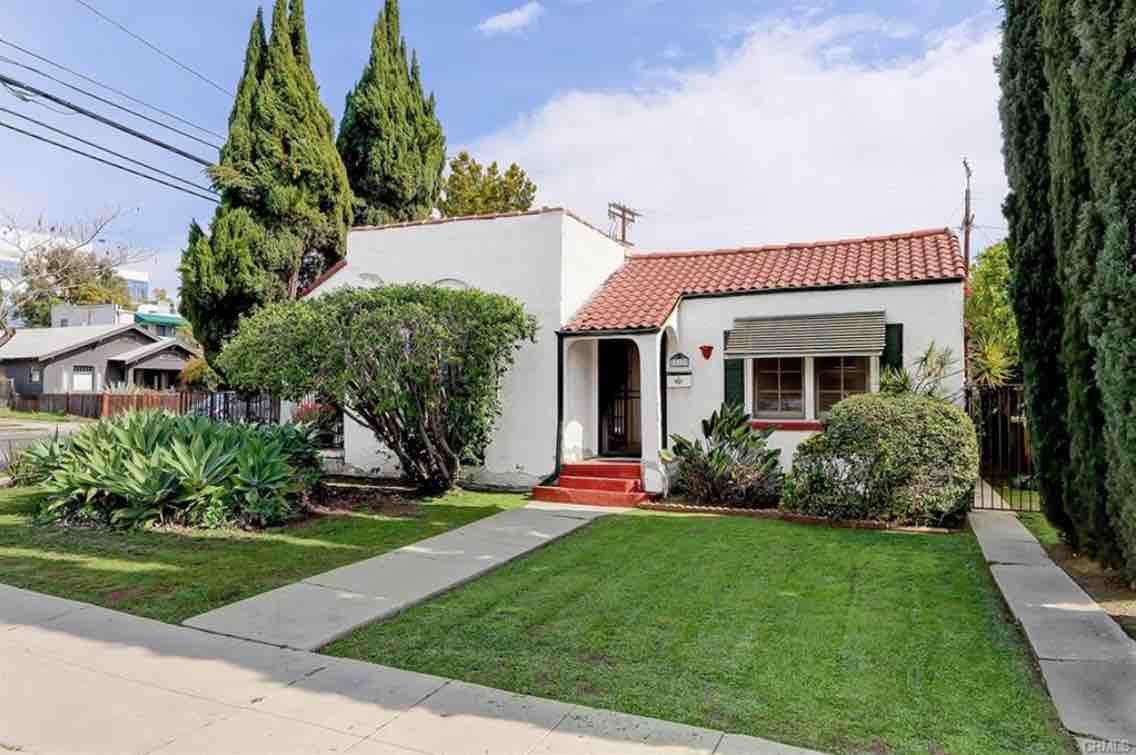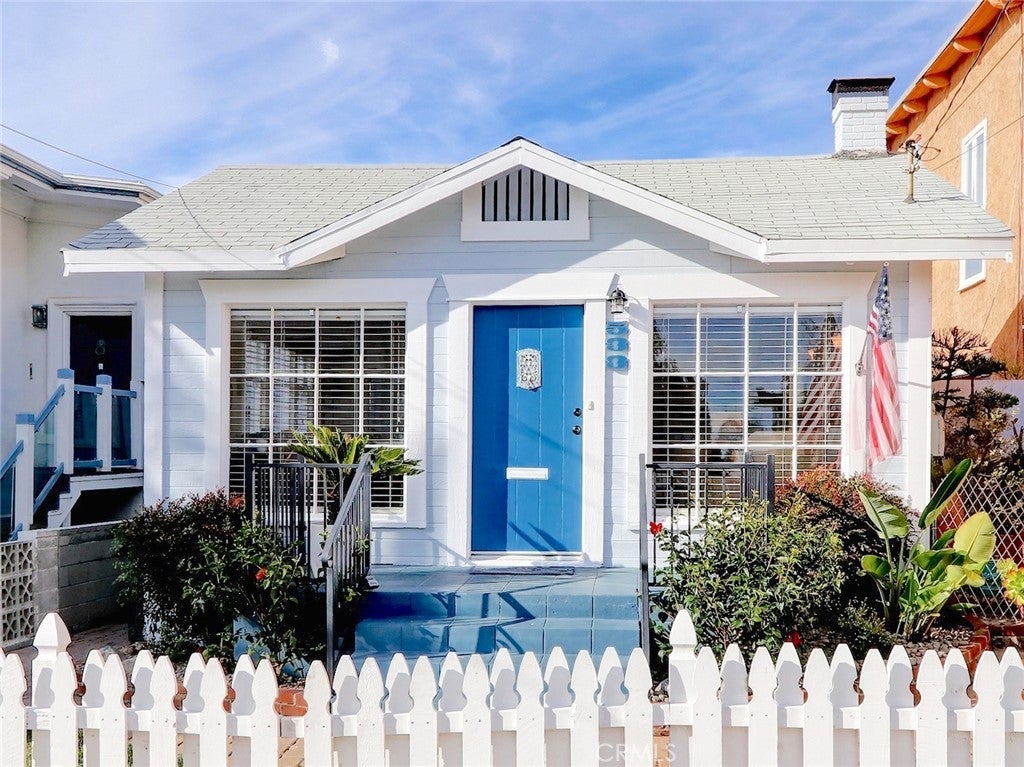We know what you think when you see a 60-to-70-year-old house in Manhattan Beach:
- teardown
- scraper
- bulldozer bait
Home values are so high here, it often makes the most sense for a buyer to use the land, not the house.
And that's also true all around SoCal.
But it's not always the case that an old, old house has to get knocked down.
Twice this year, our office has actually helped save 100-year-old houses when selling them.
The latest closed today, in Hollywood (!):

That's 858 North June Street, a 1923-built single-story Spanish-style duplex on a corner lot.
Sure, it's outside of Manhattan Beach (by a lot), but we had the listing thanks to a loyal client who inherited it and decided to sell.
The property was in rough condition. The foundation was not properly upgraded, and the house had shifted over the years due to seismic activity (presumably) and just the weight of being there for so long (logically). One unit really hadn't been improved since the owners moved in, back in 1948, and in fact it had been "let go" for a while.
Still, builders were tiptoeing around the property for their own reasons (see our soapbox rant below), and we ultimately wound up with buyers who are perfectly happy to restore and upgrade the little duplex and keep it, at least for the foreseeable future. It's more for family to be close right now. Development can wait.
Meanwhile, earlier this year, our Edge office also sold a little cottage that everyone thought was going for land value.

That was 533 13th (2br/2ba, 1194 sqft.), which had reached 104 years old before we got it onto the market early this year. (Yes we did just reference this one last week!)
Although it's one of the last 1-story homes in an area where pricey 3-story new homes are going up all over, the buyers loved the little cottage and remade it for family members to live nearby.
We were really pleasantly surprised on both of these sales. As much as you have to love big, newer houses, it's fun and kind of heartwarming to also see the classics stick around sometimes.
There's no guarantee that either home will make it to 200 years old, but we'll just call this our little contribution to preservation for now.
Oh did we say we had a little rant coming?
 Here goes.
Here goes.
We believe SoCal needs more housing. All of California needs more housing. People need to get building. Cities need to allow it.
Some of it probably needs to include more formally "affordable" housing. It's a public policy matter that deserves more attention, debate and solutions.
But right here, we don't need to touch on issues of state vs. local control, or NIMBYism, or that whole thicket right now.
Because right now we're worked up over the City of Los Angeles' failing approach to building density and affordable housing. We saw the problems firsthand at the June St. listing that we just sold.
L.A. wants the density. They've rezoned large swathes of city neighborhoods to allow multiple units in areas that were originally designated for single-family homes. On the lot in question up above, where there's now that cute 100-year-old duplex, a builder could now develop 4 units, probably each around 3-4 bedrooms and 1600-1800 sqft. That's room for a lot of new people, while just 2-4 will live in the duplex.
But recent state legislation (SB 8), and the way L.A. has chosen to follow it, perversely makes new, dense development less likely.
SB 8 was more or less intended to speed up development projects. However, L.A. is using some of its authority to hit the brakes on the most recent wave of development, which had largely seen replacement of older homes with 100% market-rate units.
Now, new units developed to be offered for rent (as most multi-family buildings are operated in the area) cannot all be put up at market rates. Some need to be reserved for "affordable" housing, at rental rates steeply discounted from market. This is sometimes referred to as "inclusionary zoning," meant to limit "gentrification" of neighborhoods, which tends to push lower-income residents to outlying areas, or less desirable areas.
All of these choices make some kind of sense, except the economics.
The market for land in the area dropped perhaps 40% overnight as SB 8 rules came into play this year in L.A.
Builders' projects don't pencil out anymore if they can't build units that can go up at market rate.
Sellers don't want to sell for the prices the builders need to pay.
As a result, you get owner-users buying older homes on valuable land, instead of getting density and new, larger units.
More typically out there in the world, true affordable housing projects come with a set of incentives to help developers' projects pencil out. There is a cottage industry of developers who specialize in the economics as well as the building part.
Trying to force inclusionary zoning into neighborhoods without similar incentives means telling builders and sellers that they need to bear the full economic impact. (Building less-profitable projects or selling for less money.)
This is freezing development, negating a public policy goal the city has set for itself.
Here's hoping there are some solutions in Year 2 of implementing SB 8. The city can either do that, or try to repeal the law of supply and demand.
Rant concluded.
Please see our blog disclaimer.
Listings presented above are supplied via the MLS and are brokered by a variety of agents and firms, not Dave Fratello or Edge Real Estate Agency, unless so stated with the listing. Images and links to properties above lead to a full MLS display of information, including home details, lot size, all photos, and listing broker and agent information and contact information.



 Here goes.
Here goes.